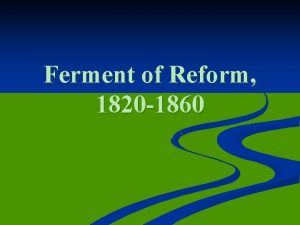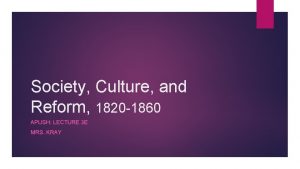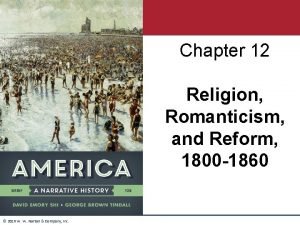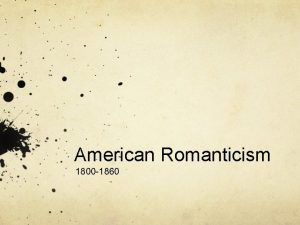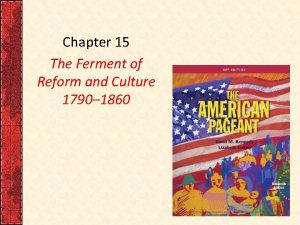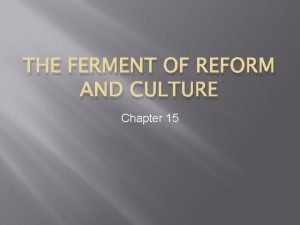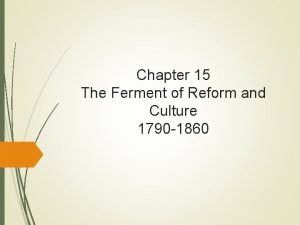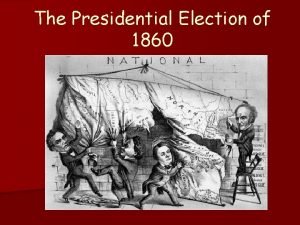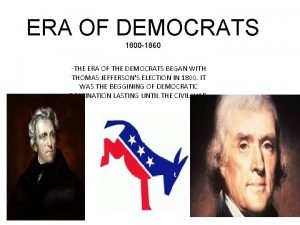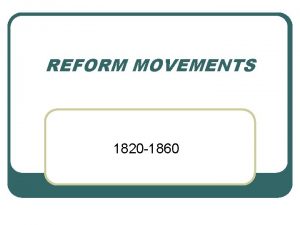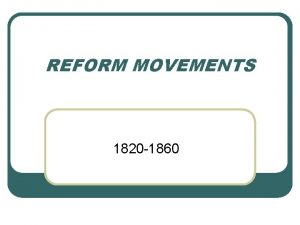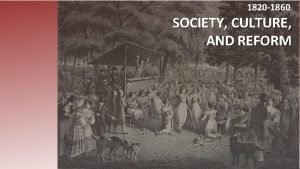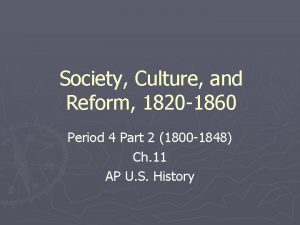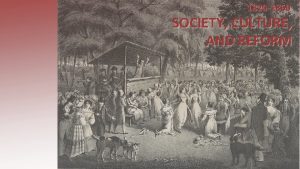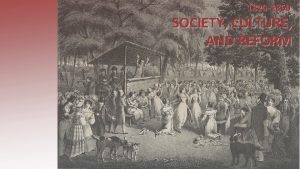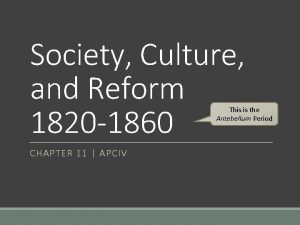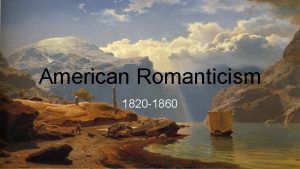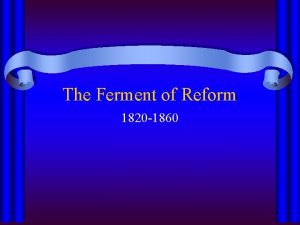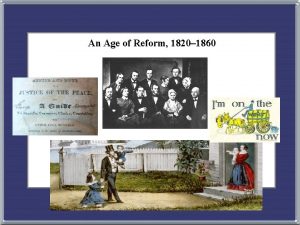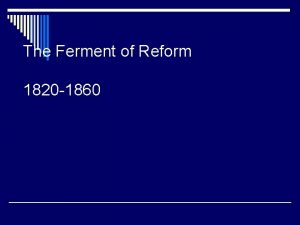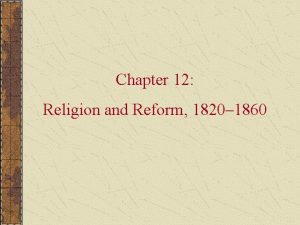Reform in American Culture 1820 1860 To change
















- Slides: 16

Reform in American Culture 1820 - 1860 To change or not to change, that is the question Essay 4, 9 2, 3, 4, 9, 12, 13, 14, 15, 16, 17, 18, 19, 20, 21, 32, 34, 58, 62, 67, 69

Education • William H. Mc. Guffey – Mc. Guffey Readers-Grade school books morality, patriotism and idealism • Noah Webster – American Dictionary of the English Language standardized American English • Emma Willard – the first American woman publicly to support higher education for women

Education Cont’ • Horace Mann – The father of American public school education – to increase the availability and quality of free, nondenominational public schools – morality and discipline – tax supported public schools

Immigration • British Isles (Ireland) – failure of the potato crop • Northern Europe (Germany) • Ship technology improvements • The South attracted the least number

Immigration Cont’ • Poorer immigrants lived in the cities while those with some money farmed in the West • Nativism (Anti Immigration) – The formation of the Know Nothing party – Anti-Catholicism

Second Great Awakening 1820’s • Characteristics – Reaction against the growing liberalism of religion – Revival meetings and traveling circuit riders. Charles Grandison Finney & Peter Cartwright – Led to greater church membership Presbyterian & Methodist – Led to reform movements: Abolition, Temperance

Second Great Awakening Cont’ • Burned over district 1830’s –Site of numerous upstate New York revival meetings

Women • Cult of Domesticity – Moral leader and educator of the family – Traditional role of woman-Republican Motherhood – Industrialization emphasized differences between men and women

Women • Cult of True Womanhood – Break away from homemaker role and seek greater rights for women • Voting • Participation in reform movements: temperance and abolition – Led by Lucretia Mott and Elizabeth Cady Stanton

Women Cont’ • Seneca Falls Convention -1848 – “women’s rights convention – Declaration of Sentiments: “All men and women are created equal” – This movement was overshadowed by political events, but was the beginning of the women’s movement

Utopian Societies • Wanted to perfect society – New Harmony: Robert Owen 1825 – Brook Farm 1841: Transcendentalist society – Shakers: 1770’s- Religious community led by Mother Ann Lee

Utopian Societies • The Oneida Community 1811 – believed it liberated women from • the demands of male "lust" • traditional bonds of family • eugenics – eventually became a dominant manufacturer of silver

• • Temperance (no booze) German and Irish immigrants often opposed Advocated the legal prohibition of alcohol Protestant clergymen leaders Most popular Jacksonian era reform movements

Penal Institutions • Dorthea Dix –Discovery of the confinement of the mentally ill in local jails –Prisons and asylums reform

Abolitionist Movement • Slavery to the forefront of the reform movement – overshadow the others after 1830

Abolitionist Movement Cont’ • William Lloyd Garrison and the American Antislavery Society – Immediate emancipation of slaves with compensation to owners – The Liberator • Harriet Beecher Stowe –Uncle Tom’s Cabin
 American reform movements between 1820 and 1860
American reform movements between 1820 and 1860 Arthur and lewis tappan apush
Arthur and lewis tappan apush Chapter 12: religion, romanticism, and reform, 1800–1860
Chapter 12: religion, romanticism, and reform, 1800–1860 American romantic period
American romantic period American romanticism 1800 to 1860 worksheet answers
American romanticism 1800 to 1860 worksheet answers American romanticism 1800 to 1860 worksheet answers
American romanticism 1800 to 1860 worksheet answers Values feeling and intuition over reason
Values feeling and intuition over reason American culture vs indian culture
American culture vs indian culture The ferment of reform and culture
The ferment of reform and culture The ferment of reform and culture
The ferment of reform and culture Chapter 15 the ferment of reform and culture
Chapter 15 the ferment of reform and culture The ferment of reform and culture
The ferment of reform and culture Border states in 1860
Border states in 1860 Evolution de l'aspirateur au cours du temps
Evolution de l'aspirateur au cours du temps Party platform definition
Party platform definition Era of the democrats 1800-1860
Era of the democrats 1800-1860 Decreto 1860 de 1994
Decreto 1860 de 1994
